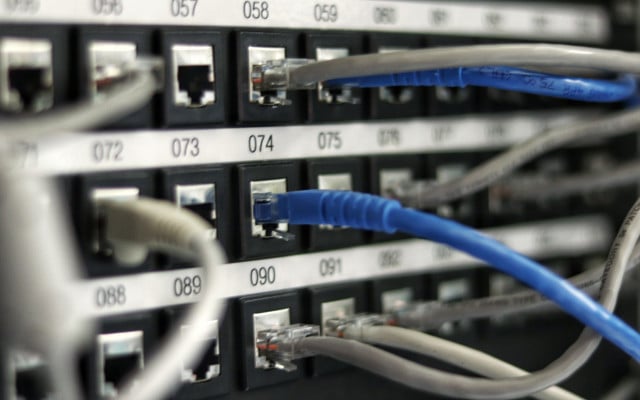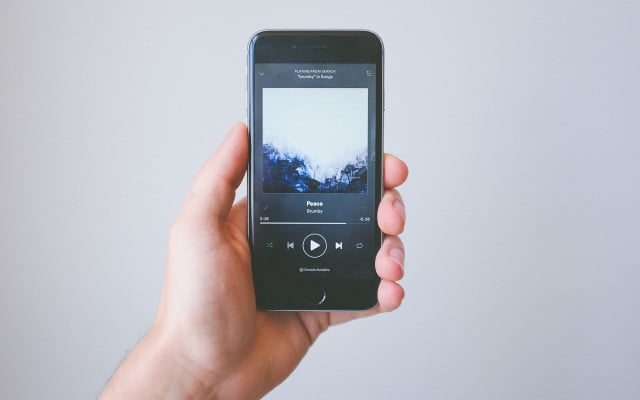So you’re up to speed again after binge-watching Stranger Things all in one weekend. But have you considered the environmental impact of your most recent streaming escapade? Online streaming sites such as Netflix are responsible for carbon emissions – and a shocking amount at that.
One study finds that 61 percent of young adults in the United States prefer online streaming services over traditional television. This trend has vastly altered media consumption throughout the country and shows no signs of reversing.
New streaming platforms enter the market yearly as current players expand their reach. Netflix, well towards the front of the pack, has some 238.39 million subscribers worldwide, while Amazon Prime Video and Disney+ claim the next two spots with 205 million and 146.1 million, respectively.
Many choose streaming over conventional media and home entertainment options primarily because they want to watch a specific show that the streaming website broadcasts exclusively. For example, Netflix’s Stranger Things drew 64 million viewers in its first four weeks.
Others may prefer streaming over DVDs and Blu-ray because it’s convenient and appears more eco-friendly; in the end, the physical discs are made of plastic. Streaming does away with all that. But are Netflix, Prime and Disney+ all that much better for the environment?
Streaming Services Require A Massive Amount of Electricity

When we stream movies, series or listen to music, our devices access data files saved on servers run by content providers (Spotify or Netflix, for example). Data storage, processing and transfer burn through a large amount of energy — more than you may think.
According to a 2016 United States Data Center Energy Usage Report, data centers (servers, storage, network equipment and infrastructure) consumed approximately 1.8 percent of total US electricity consumption. Researchers forecast steady yearly increases of around 5 percent.
Although the energy required to support digital infrastructure doesn’t solely feed into supporting online streaming, it does make up a strikingly large portion. Online streaming accounts for the bulk of the world’s internet traffic — up to around 60 percent. Meanwhile, video data transfer makes up 80 percent of traffic.
Another study reveals that the 3.2 billion hours of video Americans streamed that year used a whopping 25 petajoules of energy. That’s the the energy equivalent of powering 175,000 American households for an entire year.
Video Streaming Services and CO2 Emissions: How Environmentally Unfriendly Are They?



From a quick Google search for household hacks to reading an article on Utopia.org, everything we do on the internet requires energy. But exactly how much of this energy does online streaming require?
Researchers from the France-based think tank “Shift Project” have shown that the energy usage needed for online streaming is startling high. According to their 2019 study, online streaming is an emissions catalyst on a grand scale. In 2018 alone, video streaming reached the equivalent of 300 million tons of carbon emissions. This is equal to the total yearly carbon emissions of the country of Spain.
Two other statistics bring the extent of the internet streaming emissions problem into perspective: online streaming is responsible for one percent of global CO2 emissions. That’s equivalent to 20 percent of all greenhouse gas emissions caused by digital technologies.
The researchers examined how and what the world streams online:
- 34 percent of online streaming stems from on-demand services: sites such as Amazon Prime and Netflix were responsible for the equivalent of over 100 million tons of CO2 emissions. That’s about the same as Greece.
- 27 percent of streaming comes from pornographic content: watching porn accounted for 80 million tons of carbon emissions in 2018 — the same amount as was produced from all French households in the same year.
- Online platforms such as YouTube came in third place at 21 percent.
- Another 18 percent of videos were streamed on social media sites such as Facebook, Instagram and Snapchat.
The study conducted by the Shift Project provides a thorough overview of the energy usage resulting from streaming online videos. However, researchers often question the accuracy of the data, as exact numbers are challenging to collect.
Exactly how much energy online streaming platforms use and their overall share of CO2 emissions is hard to say. The numbers vary due to factors like how many people are streaming at once and how much data is transferred per request.
Why Do We Watch So Many Online Videos?



There are many sources of online streaming content, and we can watch that content actively and passively.
“Some videos we watch because we actually want to. Others we watch simply because the digital system forces us to,” says Maxime Efoui-Hess, an author of the Shift Project study.
Websites like Facebook automatically play videos to catch our attention. Others, like YouTube, use the “autoplay” function to retain that attention. This method of presenting online content often leads us to watch videos we didn’t originally intend to view. As a result, there’s a consistent and significant flow of data.
Is Netflix Worse For the Environment Than DVDs?



If Netflix and the rest cause such massive amounts of CO2 emissions in the US, why don’t we all make the switch back to what we know and rent DVDs instead Nice thought. However, things aren’t that simple.
DVDs have their own environmental downside. DVD production requires resources and the discs are made of plastic. They also come wrapped multiple layers of plastic. In addition, energy is required to package DVDs and ship them to their sale destination, often far from their country of origin. To top it all off, customers drive to the store to buy them. It adds up.
Read more: Go Plastic-Free: How to use Less in 7 Easy Steps
In a 2014 study conducted at the Berkeley National Laboratory and the McCormik School of Engineering, researchers attempted to track the amount of primary energy and greenhouse gas emissions associated with watching a DVD versus online video streaming. The result: Having a DVD sent to your home by mail uses just as much energy as streaming. However, driving to a DVD rental outlet still resulted in greater energy use and carbon emissions.
For factors like energy efficiency, the study based their findings on mean values. The availability of alternative means of transportation such as micromobility, electric vehicles or public transportation was not considered. Mention of additional contributing factors were also omitted from the study, including statistics about the individual use of resources for each respective method, i.e., streaming vs. DVD mail-order. Due to the currency and research scope, readers may want to take these findings with a grain of salt.
“Making the switch back to DVDs is not a solution.”
“Making the switch back to DVDs is not a solution,” says Maxime Efoui-Hess from the Shift Project. In his opinion, people should try to trade quantity for quality when streaming online videos. Simply put, we should be more selective about the online videos we watch and prioritize quality over quantity.
The Environmental Impact of Music Streaming Services: How Bad Are They?



Researchers at the Universities of Glasgow and Oslo analyzed the carbon footprint of music streaming sites and compared them to the environmental impact of cassettes, vinyl and CDs.
Let’s begin with the good news: thanks to online music streaming, the music industry has drastically reduced its contribution to the growing problem of plastic waste. In the year 2000, the production of CDs worldwide required a grand total of 61,000 tons of plastic. By 2016, this number had been reduced to a mere 8,000 tons.
Nonetheless, researchers say the total carbon emissions from music consumption has risen. In the United States, the year 2000 saw slightly over 346 million tons of carbon emissions from the music industry. In 2016, estimates put this number somewhere between 440-771 million pounds.
Does It Make a Difference Where I Stream From?



In 2017, Greenpeace took a closer look at the energy use statistics of data centers at online streaming services in their study titled “Clicking Clean.”
Among providers, iTunes faired particularly well. The music streaming service received an A-grade and was ranked at 83 percent along the Clean Energy Index, which is a benchmark measure calculated using a company’s total energy usage alongside the amount of renewable energy it sources. Spotify fell short with a D-grad, and Soundcloud fared even worse with an F.
Among video streaming platforms and providers, YouTube came out ahead of its competitors. The video sharing site used 56 percent “Clean Energy” and received an A-grade. Amazon Prime’s CO2 emissions evaluation resulted in a grade of C followed by Netflix with a D.
Read more: Neither Nestlé nor Monsanto: This is the worst Company in the World
Eco-Friendly Streaming: Can We Reduce Emissions?



“How we power our digital infrastructure is rapidly becoming critical to whether we will be able to arrest climate change in time,” says Greenpeace IT sector analyst Gary Cook.
We don’t need to eliminate digital technologies from our lives completely to protect the environment; we simply need to rethink the ways we use them.
Streaming is not a bad thing in itself. Data transfer rates are becoming faster and more efficient. Processors are gaining in performance speeds and the materials we use to make many of the most common technological devices are gradually improving.
However, consumer demands are keeping pace. Just a few years ago, HD videos at 720p resolution were considered standard. Today, viewers are accustomed to 4K resolution (2160p). This, paired with steadily increasing demand for music and video streaming, leaves little time for advances in tech to pull ahead.
Researchers at the Shift Project see the streaming services as responsible for reducing their own emissions.
Here are their recommendations:
- Streaming services need to adopt a new design: Functions such as autoplay and integrated videos which aim at maximizing content consumption must be rethought.
- The project also sees hope in stricter national and international regulations.
- In addition, companies and researchers alike need to find ways to operate servers more efficiently.
Scientists from the University of Glasgow also argue that greater sustainability could be achieved if more online streaming service providers operated their data centers with renewable energy.
How to Stream More Sustainably? 7 Green-Streaming Tips



In order to reduce the environmental impact of streaming, the streaming services themselves need to take the necessary steps to make their services more sustainable. However, you too can play a role in reducing the CO2 emissions resulting from online streaming. And in no way does this mean skipping out on the next season of The Walking Dead!
Here’s how to reduce your carbon footprint when online streaming:
- Reduce video quality: 8K resolution is not a must – a majority of videos look just as great streamed at a reasonably lower resolution.
- Swap screens: Watch on your phone instead of your computer! These use far less energy.
- Be picky: If you really can’t decide or discover “the trailer was better than the movie”, just turn it off.
- Use mindfulness: Try to avoid surfing on your phone while streaming. This burns through heaps of data and distracts you from the story.
- Digitally detox: Try not to spend every evening in front of a screen. Read a book for a change, get outside and spend a night on the town with friends.
- Less is more: Nobody needs to listen to music whenever they’re on their way somewhere. Unplug and you’ll notice you take in your surroundings in a completely different light. For those long treks, bring a good book with you for the bus or train ride home.
- No YouTube music: This online streaming video service is often used as an unofficial music streaming service – with a couple of notable downsides. There’ll always be a video playing in the background, so if you’re not watching this translated to a complete waste of data and energy.
Read more:
- Take Action: 15 Everyday Ways to Combat Climate Change
- Where Are Apple Products Made and Are They Sustainable?
- E-Mobility Pros and Cons: The Benefits and Challenges of Electric Vehicles
- How to Save Money on Gas While Helping the Environment
Do you like this post?










